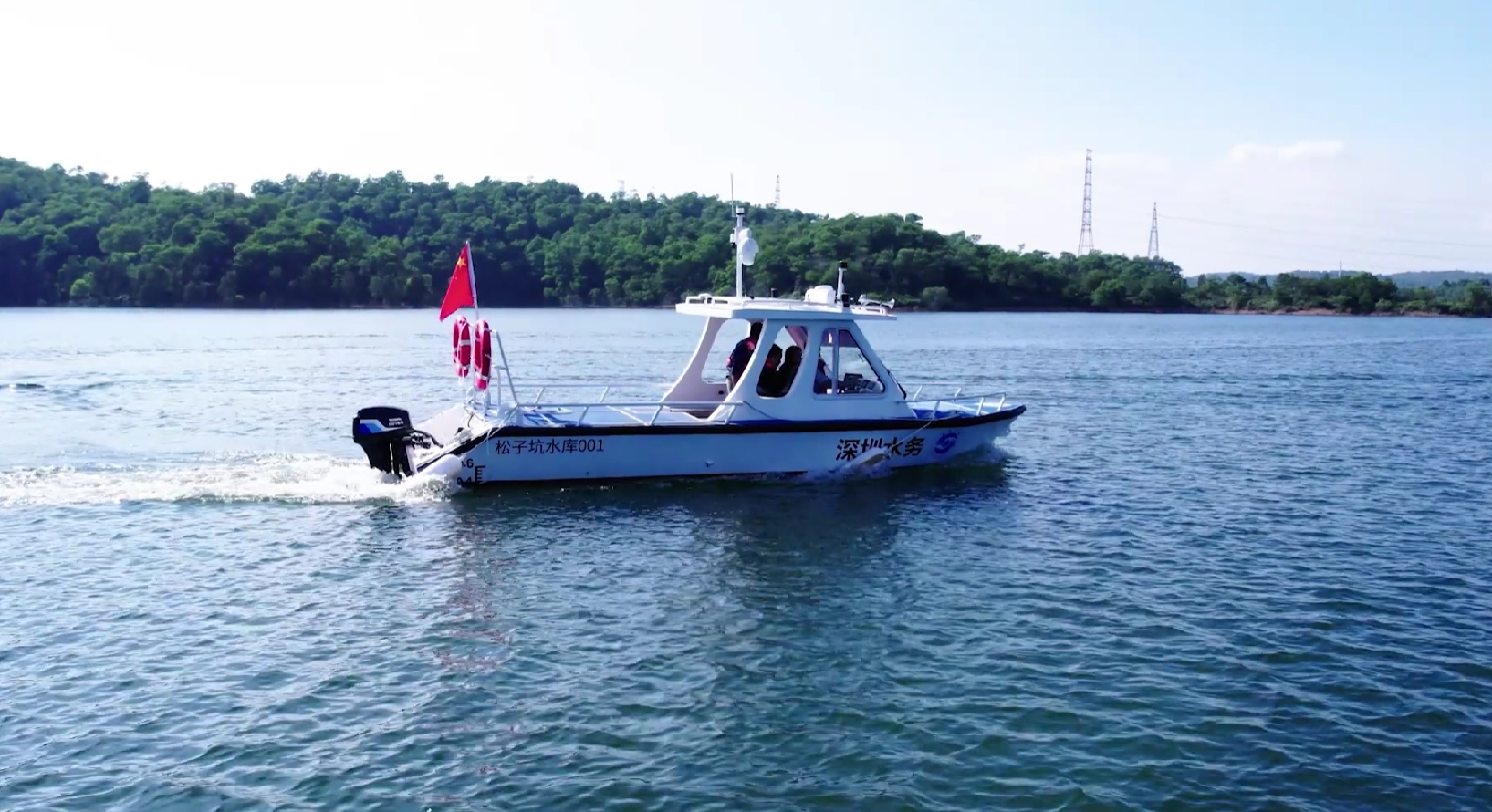
A new drone boat has successfully completed its mission in a reservoir located in Shenzhen, China recently. This security unmanned surface vehicle, developed by a collaborative research team led by scientists from the Hefei Institutes of Physical Science (HFIPS) of Chinese Academy of Sciences (CAS), features a larger size, expanded functionality, and greater intelligence.
"Our unmanned surface vehicle (USV) has a length of 7.5 meters and a width of 2.5 meters, and reaches 13 km/h, which is the same speed as an alligator," said YU Daoyang, who led the team, "The 70kWh lithium battery enables extended navigation exceeding 65 km."
With AI and robotics technology, intelligent equipment can conduct modern monitoring of reservoir areas around the clock. Through manual inspection, intelligent inspection, video monitoring, and instrument monitoring, a dynamic monitoring system can be constructed, which improves automatic collection and analysis of intrusion information data, enabling accurate intrusion detection and law enforcement in the reservoir area.
"We applied several inventions to this big drone," said YU.
A Simultaneous Localization and Mapping (SLAM) system enables autonomous navigation, obstacle avoidance, and map generation even in areas without communication or satellite navigation signals.
Additionally, the USV features a fully-electric steering architecture and control system that seamlessly integrates manual, remote, network, and unmanned control, resolving compatibility and robustness issues between conventional ship control systems and intelligent systems.
Furthermore, the USV employs an intelligent algorithm for automatic image monitoring and recognition of water surface targets, utilizing deep learning algorithms to detect and classify prohibited people and objects along shorelines, providing accurate identification and warnings.
Lastly, a simplified system that allows for seamless switching between unmanned and manual control systems, enabling autonomous cruise and control without the need for external devices.
These advancements, which enable the USV to autonomously navigate and provide accurate identification of activities, ensure efficient and reliable security measures for reservoirs, according to the team.

The newly-developed unmanned surface vehicle is on patrol in a reservoir located in Shenzhen, China. (Image by HFIPS)